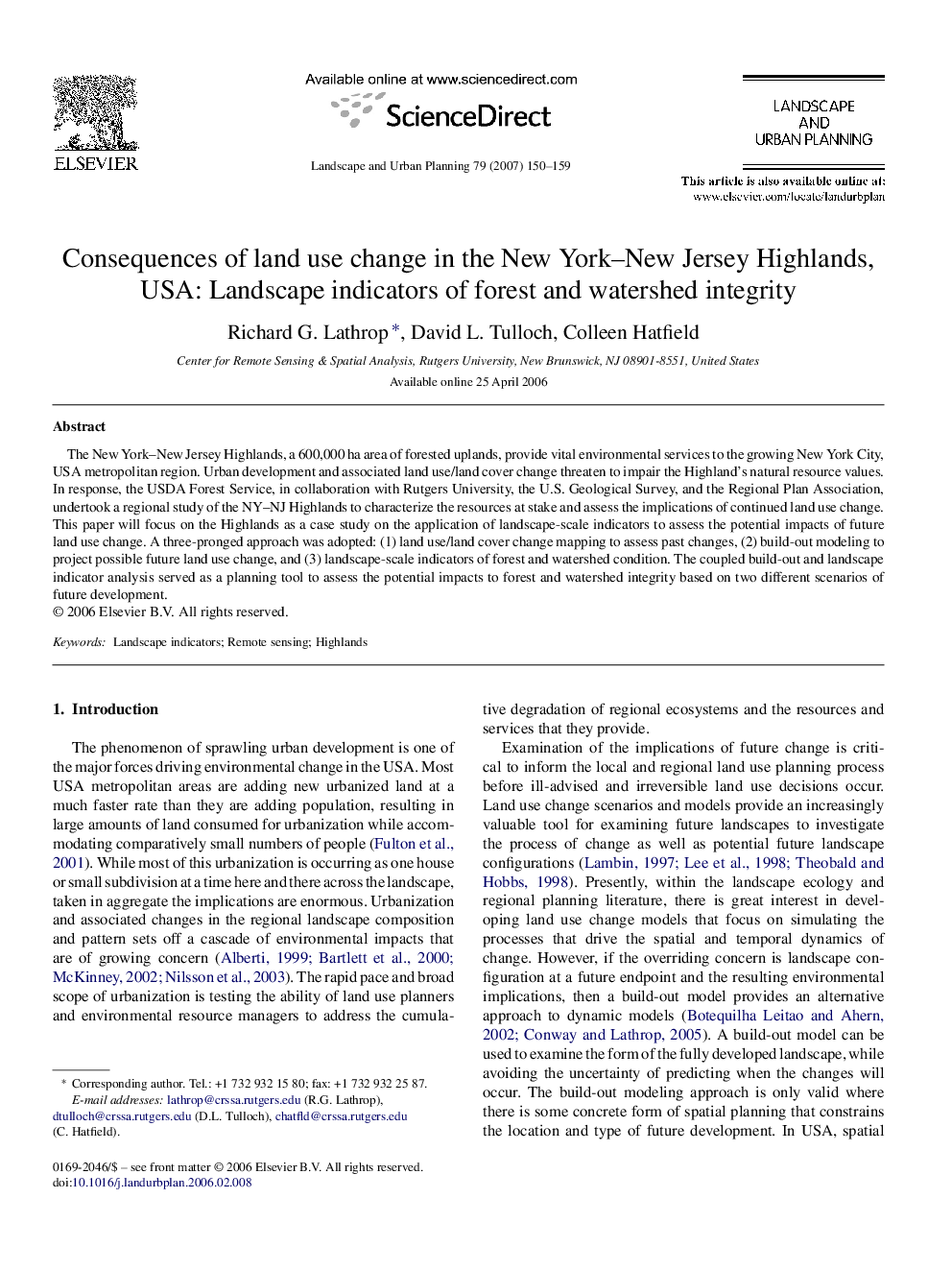| Article ID | Journal | Published Year | Pages | File Type |
|---|---|---|---|---|
| 1050674 | Landscape and Urban Planning | 2007 | 10 Pages |
The New York–New Jersey Highlands, a 600,000 ha area of forested uplands, provide vital environmental services to the growing New York City, USA metropolitan region. Urban development and associated land use/land cover change threaten to impair the Highland's natural resource values. In response, the USDA Forest Service, in collaboration with Rutgers University, the U.S. Geological Survey, and the Regional Plan Association, undertook a regional study of the NY–NJ Highlands to characterize the resources at stake and assess the implications of continued land use change. This paper will focus on the Highlands as a case study on the application of landscape-scale indicators to assess the potential impacts of future land use change. A three-pronged approach was adopted: (1) land use/land cover change mapping to assess past changes, (2) build-out modeling to project possible future land use change, and (3) landscape-scale indicators of forest and watershed condition. The coupled build-out and landscape indicator analysis served as a planning tool to assess the potential impacts to forest and watershed integrity based on two different scenarios of future development.
